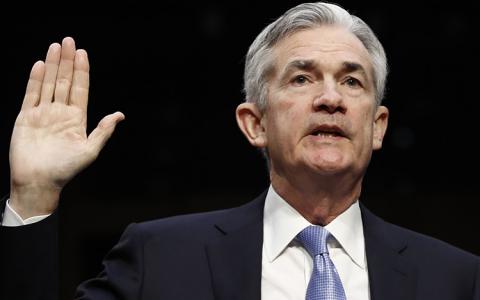
The Federal Reserve is continuing its research on the use of a central bank-issued digital currency (CBDC), but key officials are saying not to expect any Fed-issued digital dollars any time soon.
“That fundamental question of, ‘what are we trying to do with this’ is not clearly answered,” Fed Governor Randal Quarles said in a webinar on Tuesday.
The Fed is working with researchers at the Massachusetts Institute of Technology to build and test a digital dollar in different hypothetical use cases. But whether or not the Fed ultimately adopts one is a separate question.
Although other central banks have communicated stronger interest in adopting digital versions of their currencies, Fed officials are cautioning that there are many risks associated with launching one.
One issue is privacy. If the Fed uses a blockchain to manage the distribution of digital dollars, users may have concerns about the central bank being able to access and track individual spending data.
Another issue is disrupting the banking system. If the Fed allowed users to pay for goods and services using a Fed-issued digital wallet, banks would be competing with the Fed itself for deposit funding. Fed Chairman Jerome Powell has said he is open to a "two-tier" system where the private sector manages the wallet, not the Fed.
There’s also the concern about whether or not the Fed has the legal authority to issue a digital dollar at all. Powell pledged that he would not launch one without explicit legislation from Congress authorizing the Fed to do so.
“You can expect us to move with great care and transparency in considering a CBDC,” Powell said on March 22.
Why central banks?
Other central banks are moving faster on their own digital currencies, with the European Central Bank already telegraphing the possibility of launching one within four years.
The Fed project is also several years behind the People’s Bank of China, which is already piloting its own digital yuan with users and merchants.
Some central banks see monetary policy benefits to launching digital currencies.
For example, the use of a central bank-issued digital wallet would allow central banks to more directly pass on stimulus to consumers. Instead of “helicopter dropping” money onto the banking system, the Fed could funnel the stimulus straight into consumer wallets.
The ECB and other central banks with negative interest rates could also apply those rates directly to any deposits held in those wallets, more effectively pushing consumers to spend into the economy.
Bank of America Securities expects that central banks will find more benefits in a digital currency than risks.
“We believe CBDCs will become more widespread by the mid-2020s,” BofA Securities wrote Wednesday.
But for the U.S., policymakers are hesitant to disrupt the status quo given the dollar’s role as the world’s reserve currency. Even with the race among other central banks and private players like Facebook’s Diem (formerly Libra), the Fed has said it will not move with haste on the digital dollar project.
“I don’t see an urgent flaw in our system that a central bank digital currency would fix,” Quarles said Tuesday.
This article originally appeared on Yahoo! Finance.



